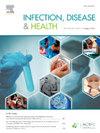Microbial laden mobile phones from international conference attendees pose potential risks to public health and biosecurity
IF 2
Q2 PUBLIC, ENVIRONMENTAL & OCCUPATIONAL HEALTH
引用次数: 0
Abstract
Introduction
Mobile phones, contaminated with pathogenic microorganisms, have the potential to act as “trojan horses”. The microbial signatures present on their surfaces most probably vary across different geographical regions. As a result, mobile phones belonging to international conference attendees may serve as a model for global microbial dissemination, posing potential risks to public health and biosecurity.
Aim
This study aimed to profile the microbes present on mobile phones belonging to delegates attending an international scientific conference through use of metagenomic shotgun DNA sequencing.
Methods
Twenty mobile phones, representing ten different geographical zones from around the world, were swabbed and pooled together into ten geographical-specific samples for high definition next-generation DNA sequencing. WONCA council members were invited to participate and provided verbal consent. Following DNA extraction, next generation sequencing, to a depth of approximately 10Gbp per sample, was undertaken on a v1.5 Illumina NovaSeq6000 system. Bioinformatic analysis was performed via the CosmosID platform.
Results
A total of 2204 microbial hits were accumulated across 20 mobile phones inclusive of 882 bacteria, 1229 viruses, 88 fungi and 5 protozoa. Of particular concern was the identification of 65 distinct antibiotic resistance genes and 86 virulence genes. Plant, animal and human pathogens, including ESKAPE and HACEK bacteria were found on mobile phones.
Discussion/conclusion
Mobile phones of international attendees are contaminated with many & varied microorganisms. Further research is required to characterize the risks these devices pose for biosecurity and public health. Development of new policies which appropriately address and prevent such risks maybe warranted.
国际会议与会者携带微生物的手机对公共卫生和生物安全构成潜在风险。
导言:受到病原微生物污染的手机有可能成为 "特洛伊木马"。在不同的地理区域,手机表面的微生物特征很可能各不相同。因此,国际会议与会者的手机可能成为全球微生物传播的典范,给公共卫生和生物安全带来潜在风险。目的:本研究旨在通过使用元基因组枪式 DNA 测序,对参加国际科学会议的代表手机上的微生物进行分析:方法:对代表全球 10 个不同地理区域的 20 部手机进行拭抹,并将其汇集成 10 个特定地理区域的样本,用于高清下一代 DNA 测序。WONCA理事会成员应邀参加并口头表示同意。提取DNA后,在Illumina NovaSeq6000系统v1.5版本上进行下一代测序,每个样本的测序深度约为10Gbp。生物信息分析通过 CosmosID 平台进行:结果:在 20 部手机上共发现了 2204 种微生物,包括 882 种细菌、1229 种病毒、88 种真菌和 5 种原生动物。其中特别值得关注的是鉴定出了 65 个不同的抗生素抗性基因和 86 个毒力基因。在手机上发现了植物、动物和人类病原体,包括 ESKAPE 和 HACEK 细菌:讨论/结论:国际与会者的手机受到多种微生物的污染。需要进一步研究这些设备对生物安全和公共卫生造成的风险。也许有必要制定新的政策来适当处理和预防这些风险。
本文章由计算机程序翻译,如有差异,请以英文原文为准。
求助全文
约1分钟内获得全文
求助全文
来源期刊

Infection Disease & Health
PUBLIC, ENVIRONMENTAL & OCCUPATIONAL HEALTH-
CiteScore
5.70
自引率
5.70%
发文量
40
审稿时长
20 days
期刊介绍:
The journal aims to be a platform for the publication and dissemination of knowledge in the area of infection and disease causing infection in humans. The journal is quarterly and publishes research, reviews, concise communications, commentary and other articles concerned with infection and disease affecting the health of an individual, organisation or population. The original and important articles in the journal investigate, report or discuss infection prevention and control; clinical, social, epidemiological or public health aspects of infectious disease; policy and planning for the control of infections; zoonoses; and vaccination related to disease in human health. Infection, Disease & Health provides a platform for the publication and dissemination of original knowledge at the nexus of the areas infection, Disease and health in a One Health context. One Health recognizes that the health of people is connected to the health of animals and the environment. One Health encourages and advances the collaborative efforts of multiple disciplines-working locally, nationally, and globally-to achieve the best health for people, animals, and our environment. This approach is fundamental because 6 out of every 10 infectious diseases in humans are zoonotic, or spread from animals. We would be expected to report or discuss infection prevention and control; clinical, social, epidemiological or public health aspects of infectious disease; policy and planning for the control of infections; zoonosis; and vaccination related to disease in human health. The Journal seeks to bring together knowledge from all specialties involved in infection research and clinical practice, and present the best work in this ever-changing field. The audience of the journal includes researchers, clinicians, health workers and public policy professionals concerned with infection, disease and health.
 求助内容:
求助内容: 应助结果提醒方式:
应助结果提醒方式:


